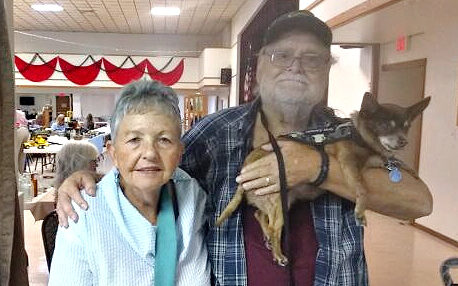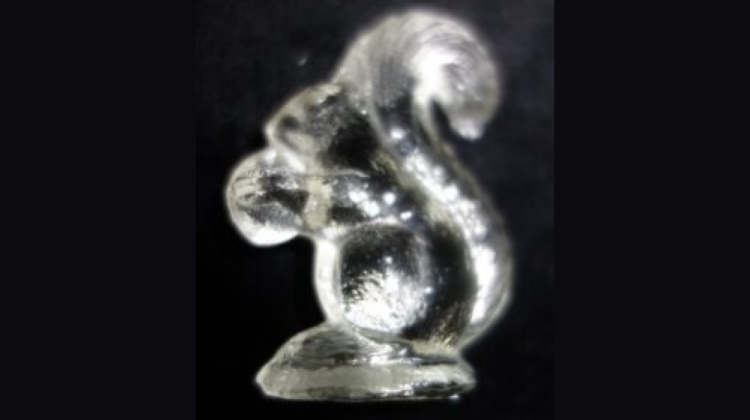
Every marble collector that we know has at least a handful of Alley Agate swirl marbles. Over the years we have found it a bit harder to find Alley glassware, especially children’s ware, although it is out there if you look hard enough. Do you also collect Alley Agate animals and those clear glass radio antenna strain relief insulators? These can all be an interesting and enjoyable sideline for marble collectors.
It can be very easy to swerve into the weeds with these little Alley glass creatures. For example, did you know that the ear hole is below the eye on an Alley rooster? Did you know that Alley made two versions of the standing sparrow or that the toes on the pecking sparrow have a sharp angle compared to an L.E. Smith pecking sparrow? We collected with Larry’s sister Lynn G. Howell for many years and we often had long “conversations” about all of these finer points.
But you certainly don’t have to wander into the weeds! Enough has been published now both online and in books to help you identify the goose, the donkey, the pony, and all the rest with relative ease and we will point you in the right direction. We also have a few L.E. Smith animals and even one or two McBrides. However, we strongly recommend that you not start comparing Smith Scotties to Alley Scotties and horses to horses across two or more companies! There are weeds and then there are sand traps!
Emphasis on “Fun”
You will almost certainly see glass figurines from other companies mixed in with the Alley animals because almost no antique proprietor or dealer has any idea who made the animals in her or his shop, where, or when. If possible, at least in the beginning, stick to identifying one company at a time. Start with Alley. Remember, the emphasis is on fun, enjoyment, and having something you look forward to identifying as Alley Agate so you can display it with your marbles! We will show you some pictures below of Smith animals just for fun![1]
Alley or Not?
These little glass figurines are usually very inexpensive. If they aren’t then ask why not. We have bought any number of them for $1.00 and they usually sell for less than $3.00. Look for them at estate sales, yard sales, flea markets, and all the antique shops that you check out. Larry’s sister tries to identify them in the shop using Larry Alley’s book[2], but, since the price is so cheap we always buy the animal, take it home and then confirm or disprove that it is an Alley. If you don’t already own one, buy a copy of Larry Alley’s book; there are lots of photos that are helpful in identifying both marbles and glass animals.
If it is an Alley then we write “Alley” on a paper label and stick it to the bottom of the animal. If it isn’t, and if we do identify it as another company, then we write that company’s name on a paper label on the bottom of the animal, and then we add the animal to our menagerie. If you want to keep an unknown varmint then you might want to write “unsure” or “unknown” on the label. You don’t want to get into “re-identifying” the creatures. Believe me, we speak from experience.
There is an earlier post about Larry Alley III in this magazine that describes the factory history and the the family legacy,
Untold Stories
So, here we are. This post doesn’t tell you exactly how to identify Alley Agate figurines[3]. Our purpose is to encourage you to collect some of these little creatures and confirm to yourself that they are Alley by using online and text references. Add them to your Alley marble collection. And most of all have a good time! We want to tell you a few stories about how we came to own some geese, a donkey and horse or two, and especially Scottie dogs and chickens! Each story will give you ideas as to where to buy members of your personal menagerie. But we start with a squirrel.
The Squirrel With The Big Nut!
We collected a few animals before the summer of 2015 and we tried to identify them, but that summer our collection really took off! In July we attended the 12th Akro Agate Show with Auctions in Bridgeport, West Virginia. We set up our room in order to sell Everglades marbles which we had just made with Dave McCullough at Dave’s Appalachian Swirls, in Pennsboro, West Virginia.
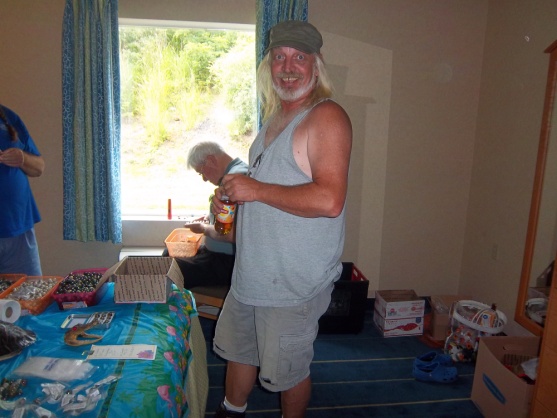
Somewhat reluctantly we bought a “large nut” squirrel from our old West Virginia friend, David Griffe (Griff) for $10.00. The price was high, but we had never seen anything like this squirrel! The animal is large for an Alley at 2½” tail top to base and 2” wide. However, Griff assured us that it is authentic and that one just like it has been dug in St. Marys, WV. He said that L.E. Alley, III is even revising his book to include it.
This is Griff in our room and you can see some of how we set the room up to sale.
When we got home we found online the Addendum to page 70 of the Alley book which we describe in footnote 2. (“L.E. Alley Glass Figurines and L.E. Smith Copies”). This is the “revision,” actually an addendum, which Griff told us about. Sure enough, a large, slightly yellow, squirrel, is included in the update.
Larry Alley writes that in the addendum that “a squirrel (2½ in) with a large nut was found among Alley marbles and scrap glass in a Pennsboro [not St. Marys] garage. Its provenance is not traceable. I consider it an Alley because it is warped and has to be factory scrap and not a retail purchase from another company”[4]. We have placed the Addendum inside our book at the appropriate page.
Alley was in St. Marys, West Virginia, from 1937 – 1948; they were in Pennsboro, West Virginia, from 1931 – 1937. The odd big-nut squirrel must have been made in the 1930s. So, both Griff and Alley are correct. We just wondered, both in 2015 and now, where and how Griff finds such artifacts!? He has certainly surprised us before and since.
Squirrel Comparison
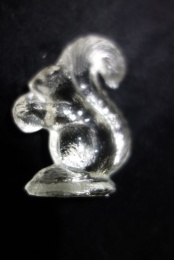
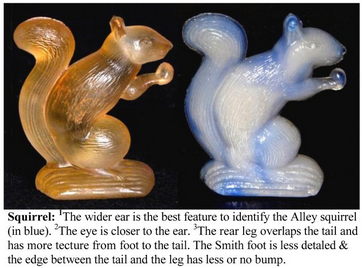
The squirrel with the big nut is the feature photograph in this story. We don’t have a squirrel with a small nut any longer. We donated ours to a museum. These small nut pictures belong to Larry Alley III and are from the addendum we cited above. The small nut squirrel is fairly easy to find, but the squirrel with a large nut is almost impossible to come across “in the wild”.
Compare the two animals. What do you think the large nut is? The only thing we can think of is a shaggy bark hickory nut. With the green outer hull these nuts are the size of a golf ball! Jo thinks that the squirrel has a hickory nut without that thick green hull.
There are six types of hickory in West Virginia, where both squirrels were made, including the non-native pecan hickory[5]. The shaggy bark hickory is one of the most common native hickories in West Virginia. You can recognize the tree by the long shaggy bark running up and down the trunk. Still, sometimes when we look at our squirrel, we just wonder what inspired Larry Alley Sr. to ever make the mold.
Bottom Line
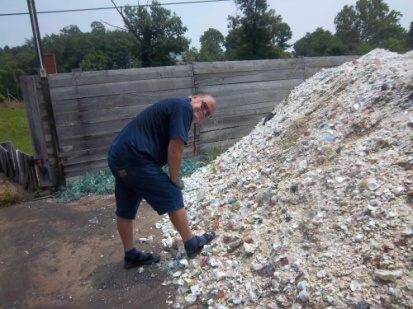
Marble auctions, sales, and meets, like Marbles in the Mountains in Pigeon Forge and the West Virginia Marble Collectors Show in Mineral Wells, West Virginia[6], are wonderful places to meet online marble friends; see marbles and glass animals; and find a remarkable range of collectible glass you probably will see nowhere else. We purchased glass at these meets which we had never seen in shops, flea markets, or online.
Sadly, our traveling and selling days are over. And we understand that travel costs are having a terrible impact on these shows. Gas, rooms, food, are all more expensive and most of us are on tight budgets. Still, keep these meets in mind. The economy will improve eventually and, hopefully, we can all get back to a hobby we love.
In his note about the addendum page to his book, Larry Alley wrote that he considers the squirrel with the big nut in the addendum factory scrap and not a retail purchase from another company. This photograph shows an example of glass marble factory cullet. Notice the clear green glass next to the fence. This has been sorted out of the scrap.
It was not unusual for glass factories to bury scrap like this on their marble site or nearby, and diggers often uncover some very remarkable marbles from this buried scrap. We remember a site in Cairo, West Virginia, and another in Clarksville, where scrap was used as a firm base underneath a cement floor in the glass house. And, in the case of Alley, scrap diggers also find animals and insulators from time to time.
This scrap, and even loads of rejected marbles, often end up as foundation for driveways at homes in the local area. These animals do turn up from time to time in the drip lines of old homes and in old barns and out buildings. We have a friend in Sistersville, West Virginia, who dug the foundation for a patio at his home on the Ohio River. While digging he uncovered and “rescued” tons of buried marbles!
Glass Animals In The Wild
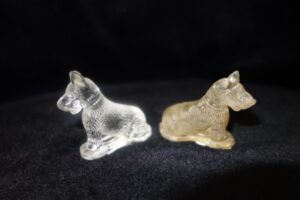
Look at these two sitting Scotties. Believe it or not, both are genuine Alley! We don’t intend to compare the two feature by feature. The point of the photograph is that the only difference between the two is that the one on the right was buried. It was scrap or cullet.
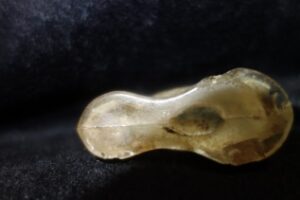
The bottoms of both Alley and L.E. Smith animals were polished and all are scarred to some extent. But the bottoms of all the animals which were sold were polished smooth so the animal would sit up in a shop or home. Our dug Scottie was not polished at all. It has a lump of glass on the base which makes it impossible for it to sit up. You can see the oval lump in this photograph. We pressed the dug Scottie down into the soft velvet cloth so that it would sit up for a picture.
We have no idea why the Scottie was rejected, but someone pulled him out of a run, did not finish him with a polished base, and then tossed him in the cullet pile. We really do wonder why.
We bought the dug Scottie at Parkersburg Antiques in 2015 in Parkersburg, West Virginia. This one is special, and in Parkersburg the dealer did know what he had. We paid about $5.00 for him. While it was rejected and scrapped by Alley and was never finished for retail sale, as you can see, all of the Alley detail is there: the eyes and pupils; the collar with studs; the detailed rippled hair; the tail; and the closed ears which formed what Larry Alley calls a “pointed tiara”. Our ears are chipped and there are chips on the base, but this is to be expected under the circumstances.
We have learned that dug animals of all kinds are actually easier to identify as Alley than the pretty shiny ones which went directly into retail shops. Most of these were treasured by someone over the years and kept clean. It is generally harder to see the features on these. While it is easy to reach consensus among collectors when studying a dug animal, it can be almost impossible when you have a bright shiny one! And keep in mind that even “experts” can be unsure and can, and do, argue with each other over the smallest details.
Dug animals are relatively easier to find in West Virginia, all along the Ohio River, and in Southeast Ohio. We recently found the Scottie to the left in this photograph in Daphne, Alabama. It cost $1.00 at a thrift shop. We can only imagine that most retail shops would toss a dug animal rather than try and sell it.
Adding To Your Collection
You can find Alley animals in antique shops. Generally, these are in locked glass cases and they cost more than those from thrift stores or flea markets. And as a rule antique dealers won’t haggle over price. We have had proprietors call the owner of a booth for us, and sometimes you do get a lower price that way. But a lower price generally doesn’t happen. Just remember that the prices for Alley animals are generally cheap to start with.
Another place to find additions for your menagerie is in thrift stores. As we noted, the owners of some of the thrift stores we haunt have no idea what the little varmints are and they will generally come down to a rock bottom price. Over the years we have had a number of thrift store owners stay on the lookout for the animals for us.
And finally, we check yard sales and estate sales. Some collectors just like the little animals and you can sometimes find a collection which includes Alley, McBride, and Smith all mixed together. Some of the animals may be from the 1970s and some may even have satin glass finish. And it may be impossible to tell what’s what if the light is poor or the sale is very crowded. We will buy the lot if the price is right and sort them out later with a magnifying glass or 10X loop and proper lighting.
 Take Me To The Fair
Take Me To The Fair
The little slightly yellowed Scottie on the right can stand up, but he leans when he does! Both of these animals are Alley. We bought the Scottie, which Larry Alley calls a begging Scottie and which we call a standing Scottie, in the Spring of 2016 at an antique shop in Arcadia, Florida.
Arcadia is one of our favorite antiquing towns. It is the County seat of DeSoto County. The little town has about 8,000 residents and it lies in Central Florida at the intersection of US 17, which runs north and south, and State Route 70 which runs east and west. The town connects Orlando, Lake Okeechobee, and the Kissimmee Prairie, with Fort Myers and Sarasota. Punta Gordo is just to the south. The seafood is wonderful. And just a footnote: we found a large wild duck nesting inside a hole in a tree downtown!
About Arcadia
Besides the 20 permanent antique shops, and we love every one, there is usually an outdoor fair once a month. Vendors come and sell their handmade art glass marbles, their handmade wooden and textile crafts, vintage ware from the 1950s – 1960s and antiques from the 1800s. You can find large caches of antique marbles of all kinds. We bought a cultured artifact at this fair once and so far no expert in any museum has been able to identify it!
We know that Hurricane Ian in 2022 and the Peace River flooding from Hurricane Idalia in 2023 damaged the antique shops and The Old Opera House, a landmark in Arcadia. But we believe, based on conversations with people living in the area and online searches, that Arcadia’s historic antique shops are back or on their way. And the Heard Opera House, built in 1906 and recently investigated by a paranormal team, is “back to its former glory.”
Begging or Standing Scottie
Larry Alley says that the standing Scottie in his addendum was found at the factory site in Pennsboro, WV (1931 -1937. Thank goodness that L.E. Smith never made this model so we don’t have to worry about any comparisons. We don’t doubt the one in Larry’s addendum was made in Pennsboro.
When we got home from Arcadia we spoke to George Clark, a friend[7] in Clarksburg, West Virginia, about the standing Scottie. We recommended to Larry Alley that he visit this friend the next time he was in Clarksburg, and he did. Clark was hesitant to contradict Alley about where the Scottie was made, especially since Alley wrote the book on the subject, but he did not believe that our Scottie came from Pennsboro. He has a Standing Scottie and he found it in Salem, West Virginia.
Salem, West Virginia
Salem is a small but very old town located in Harrison County on the historic US Route 50 at the intersection of West Virginia Route 23. It’s only about fifteen minutes east of Clarksburg. The village of New Salem was settled in 1790 by Seventh Day Baptist families from Shrewsbury (some sources say Salem), New Jersey. As of the 2020 census there were 1,485 people living in Salem.
We visited Salem to look for the Alley site, but we could not find the place where Alley worked. However, Clark does know exactly where the place is and he found the standing Scottie dog on the ground there. He says that there are other figurines still on the ground in Salem. He has no doubt that the figurines were made by L.E. Alley, but he is also confident that they were made in Salem in the 1920s and not by Alley Agate Pennsboro in the 1930s as Larry Alley reports.
Digging Through the Mists of Time
Larry tells us this in his paper “A Biography of Lawrence E. Alley, Sr.”: “After designing a sandblasting machine for glass, in the latter part of 1925, he started a sandblasting and cutting shop of his own. He then merged with the Salem Glass Company. The company had financial problems before the merger and closed soon afterwards.”[8]
Another source tells us that this sandblasting and cutting shop was in Shinnston and that it was started in 1921. They had eight employees in 1922 and they made cut glassware. It is reported online that this company was listed as Alley Glass company in the 1923 Shinnston business directory, but we cannot confirm this for a fact.
And we cannot confirm that Lawrence E. Alley Sr. ever patented his glass sandblaster. However, looking back from the perspective of one hundred years later, it seems to us that the sandblasting route could have lead to a permanent and profitable business. “Sandblasted and etched glass both use abrasives which create a frosted appearance on the glass. Sandblasting usually uses a high-speed machine that blasts down on the glass panel with sand, walnut husks or other materials to achieve its look. (It can also be done by hand!) Sandblast glass etching lets you choose the level of glass opaqueness that best fits your needs and is versatile in many ways when it comes to design.”[9]
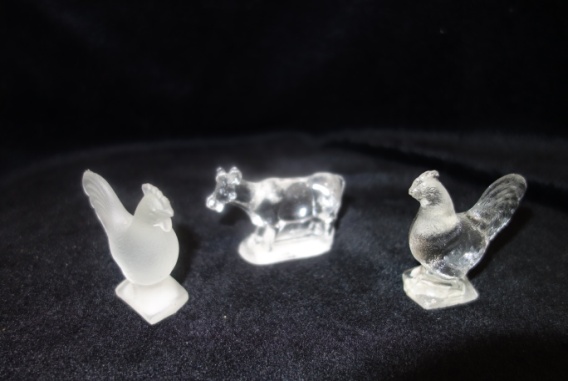 Alley never made “satin” animals although L.E. Smith did. Check out these three L.E. Smith animals. We really know little to nothing about sandblasting or etching glass, but isn’t the rooster on the far left sandblasted? It seems to us that Alley could have sandblasted or frosted some of his animals; especially early on.
Alley never made “satin” animals although L.E. Smith did. Check out these three L.E. Smith animals. We really know little to nothing about sandblasting or etching glass, but isn’t the rooster on the far left sandblasted? It seems to us that Alley could have sandblasted or frosted some of his animals; especially early on.
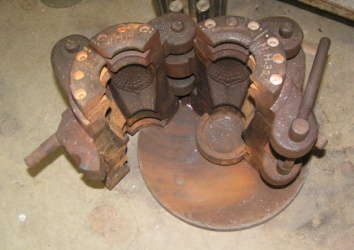 Another mystery for us is where and when Lawrence E. Alley Sr. learned to make glass molds. What did he make them out of and how did he design and plan them. We don’t know. And we know nothing about glass molds. We have never asked Larry Alley anything about where and when his Grandfather learned how to make molds.[10]
Another mystery for us is where and when Lawrence E. Alley Sr. learned to make glass molds. What did he make them out of and how did he design and plan them. We don’t know. And we know nothing about glass molds. We have never asked Larry Alley anything about where and when his Grandfather learned how to make molds.[10]
At this point in our research we agree with our friend Dean Six: “Any attempt to adequately document the fascinating career of Lawrence E. Alley [Sr.] is fraught with seemingly insurmountable obstacles.”[11]
Cairo, WV
Cairo, West Virginia, is a small town on the north fork of the Hughes River in Ritchie County. It was established in 1895 by Scotch Presbyterians who named it Cairo because the water and fertile land reminded them of the rich lands along the Nile River in Egypt. North Bend State Park is in Cairo and it has a lodge, camping, and cabins. When we were lucky enough to make it to Cairo we stayed either in the lodge or cabins.
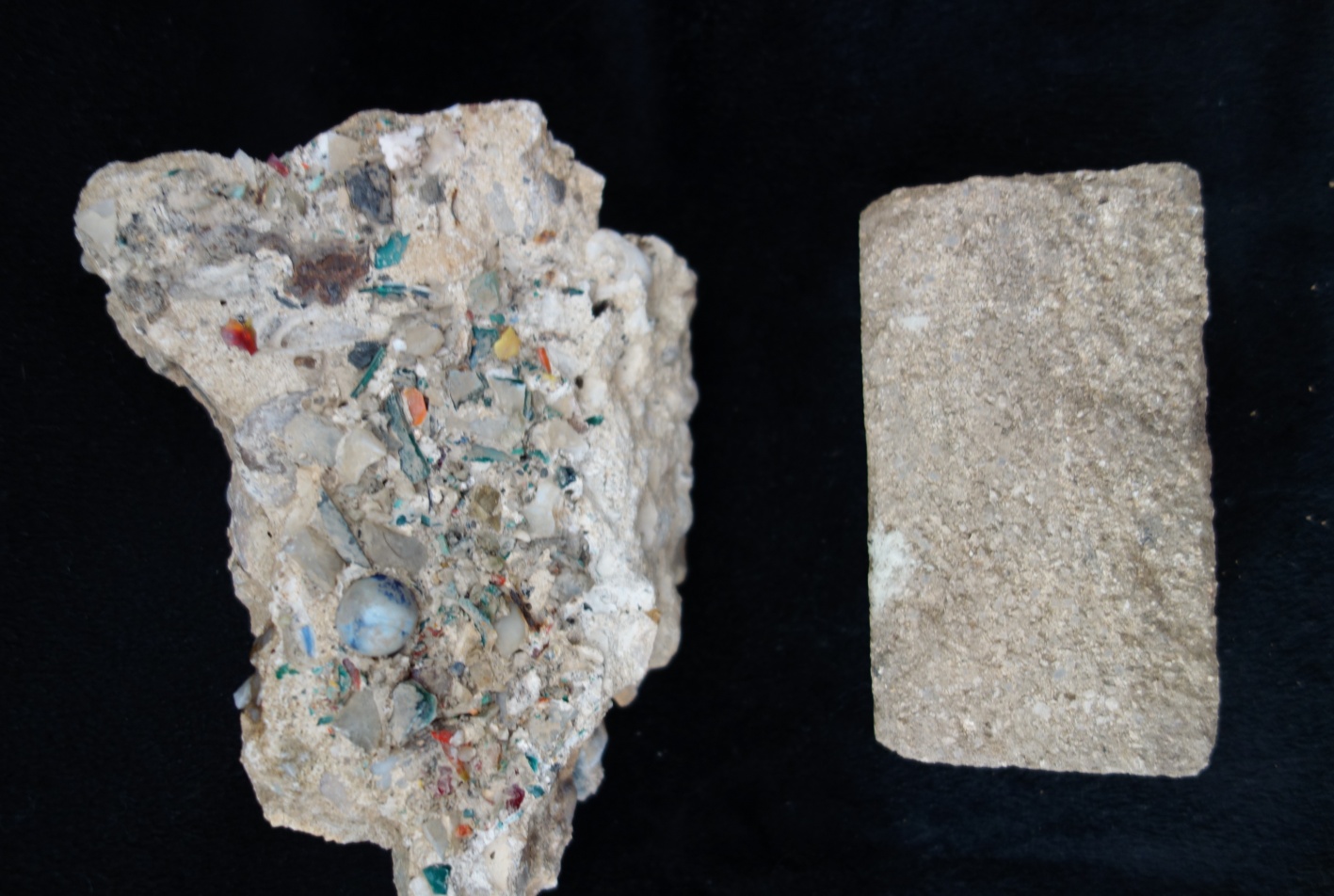
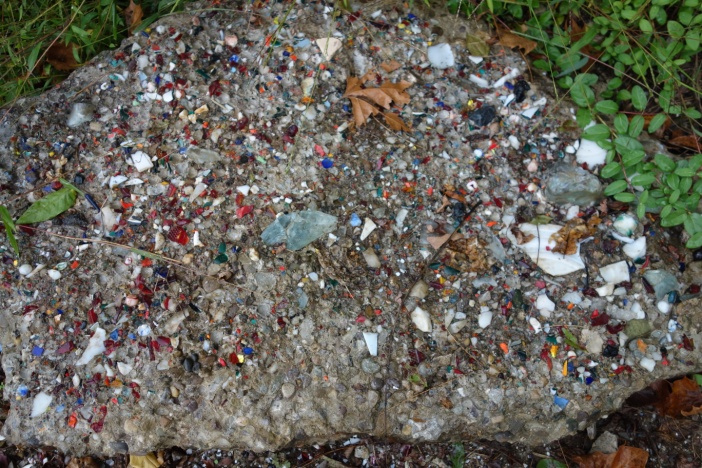 Of When marble collectors think of Cairo they remember that the Cairo Novelty Company was there from 1946 – 1952 and Heaton Agate Company made marbles in Cairo from 1946 – 1971. Some may have been fortunate enough to go to a sanctioned dig at the Heaton site. These photographs were taken where the Heaton glass factory used to be. The photographs were taken in 2022 and they show just two small portions of the factory floor which has been dug out and turned over. Remember, marbles and cullet, as shown here, were often used as a foundation.
Of When marble collectors think of Cairo they remember that the Cairo Novelty Company was there from 1946 – 1952 and Heaton Agate Company made marbles in Cairo from 1946 – 1971. Some may have been fortunate enough to go to a sanctioned dig at the Heaton site. These photographs were taken where the Heaton glass factory used to be. The photographs were taken in 2022 and they show just two small portions of the factory floor which has been dug out and turned over. Remember, marbles and cullet, as shown here, were often used as a foundation.
New Old Stock: Marshall Historic Store, Cairo
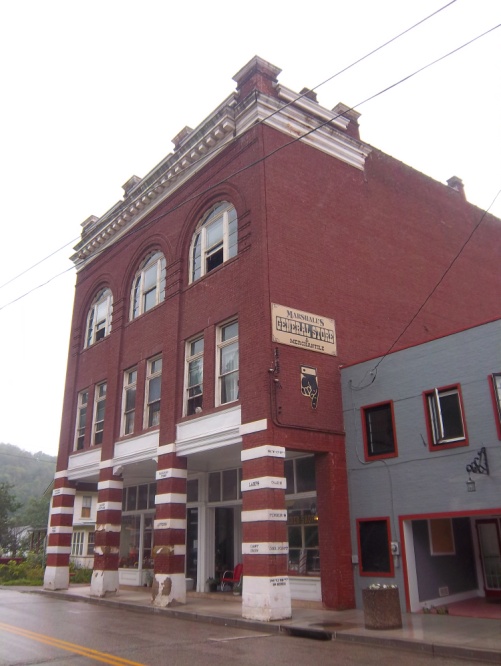 This old store in downtown Cairo was founded in 1902. We have been in it before, but the last couple of times that we were in Cairo it was closed.
This old store in downtown Cairo was founded in 1902. We have been in it before, but the last couple of times that we were in Cairo it was closed.
We were amazed and happy when in 2015 we found the store open and a gentleman inside who hoped to use it, at least to some extent, as a hostel for hikers and bikers along the North Bend Rail Trail. He told us to take our time and help ourselves. When we found two glass pecking robins inside, we were confident that they are L.E. Alley. We bought both and gave one to Larry’s sister, Lynn G. Howell.
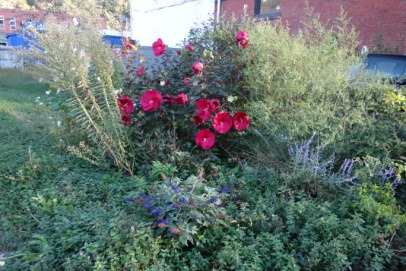 We’re sure that the old store, which was open for decades in the period when the Alley animals and marbles were being manufactured, lends provenance to the birds. Our pecking robin is in mint condition. We know first-hand how the animals and marbles were jobbed at the time, and there is every possibility that the birds, found covered in dust and hidden away on a shelf, have been in the store since they were originally purchased by the proprietor in the 1930s – 1940s.
We’re sure that the old store, which was open for decades in the period when the Alley animals and marbles were being manufactured, lends provenance to the birds. Our pecking robin is in mint condition. We know first-hand how the animals and marbles were jobbed at the time, and there is every possibility that the birds, found covered in dust and hidden away on a shelf, have been in the store since they were originally purchased by the proprietor in the 1930s – 1940s.
This flower garden is in Cairo directly behind Marshalls General Store.
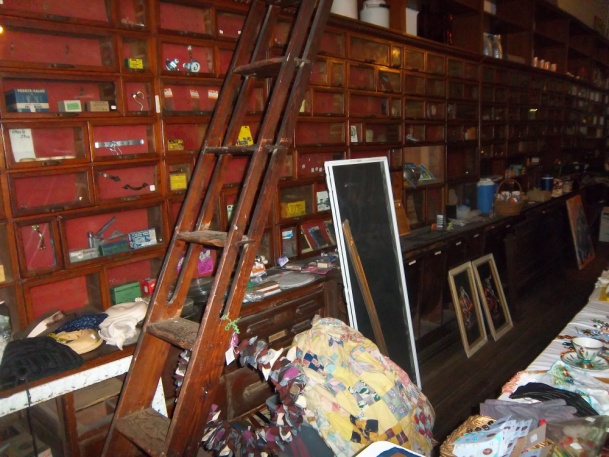
Bird Hunting!
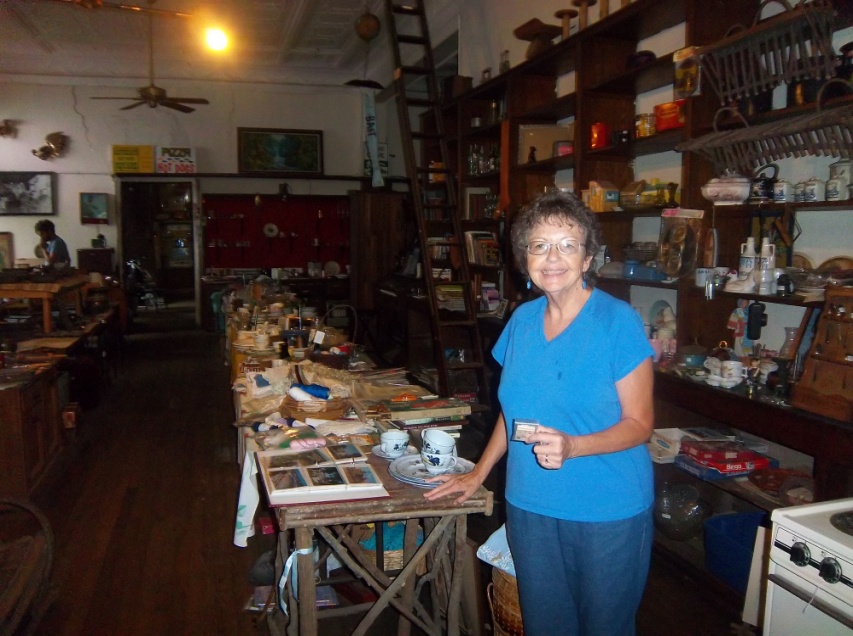
Look inside Marshall’s! Honestly unbelievable. And, believe it or not, in 2015 these drawers were still stocked just like they were in the 1920s – 1940s. It was an amazing adventure to be able to explore at our leisure. And yes, you really needed a ladder to get to some of the top shelves.
You simply cannot imagine how much fun it can be to explore an old store like this! Look at the handmade stick table that Jo is leaning on. No need to buy a folding table when you can make your own.The table itself is a collectible.
Just look at how much stuff is visible. There was more than that tucked away in drawers where is was placed upon receipt one hundred years ago!
The geese pictured below are from Larry Alley’s page 70 addendum.
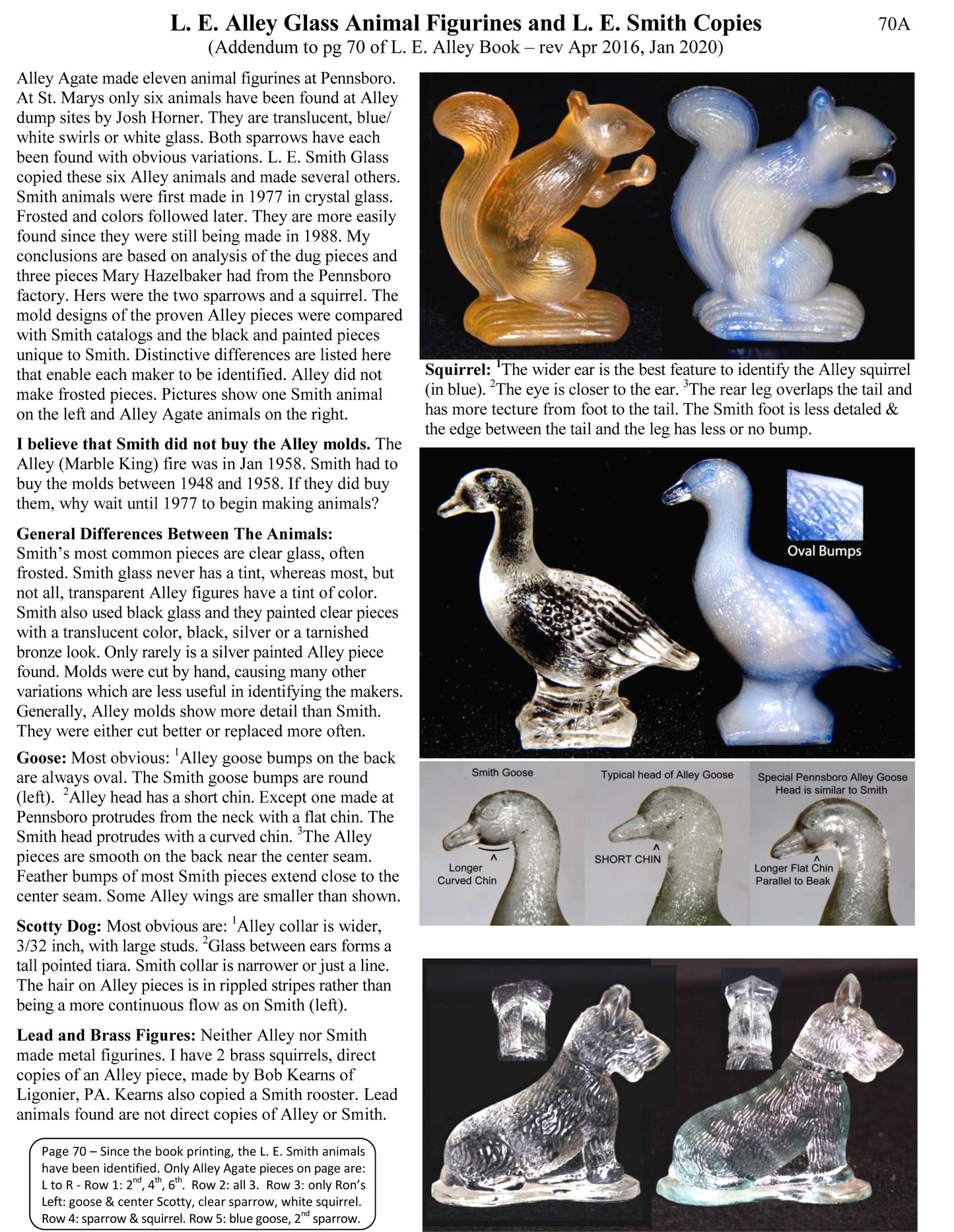
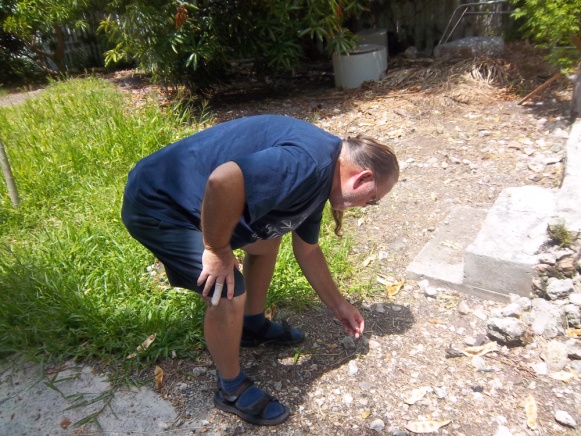
While hunting, ride to small towns nearby. You may not find an antique mall with dozens of vendors, but you just might find an old five and dime store which is still open; a drugstore or a general store. If none of them are still open then just check any lots cleared by the city or county for redevelopment. You just never know what you might find. We have found over 2,000 marbles this way; a “frozen Charlotte” doll at the Ravenswood marble site; other doll parts; and Civil War artifacts. Just get out awhile and drive a little and explore.
You may never have a “Marshall” experience like we did in Cairo, but you just never know.
The last time we talked with Larry Alley he told us about the time a man he knows found an old warehouse available for picking. Like with Marshall’s store, the warehouse had new old stock never jobbed to retail shops. The man found and bought a full gross of geese! He then had no idea what to do with them! We think that Larry bought some of them. Isn’t a gross of geese 144? Wow. What a gaggle!
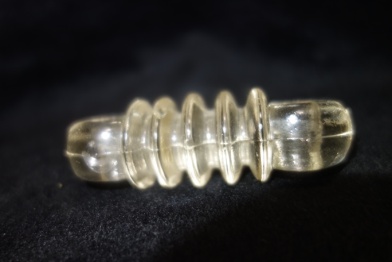 There’s More!
There’s More!
We cannot imagine that many Alley Agate collectors, even those with their own menagerie, collect Alley radio antenna strain insulators like this one. The Glass Insulator Association tells us that these devices are “…used to insulate either end of a wire antenna from the tower or other mounting hardware. The smaller types were frequently used by HAM radio hobbyists for back yard antenna installations. There is a tremendous variety of these available….”[12]
While a number of companies, such as Pyrex, Corning Pyrex, Branch Manufacturing Company, and Fleron, did brand their insulators, Alley did not. This may be one reason that collectors shy away from insulators altogether; they have no idea how to say with certainty that the strain is an Alley. Strain insulators are fairly easy to find and especially at established flea markets like the Red Barn in Bradenton, Florida, or the Renningers Mount Dora Flea Market and Antique Center in Mount Dora, Florida. Some strains are purple, aqua, an odd pea green, as well as cobalt and green. And they certainly don’t all look alike.
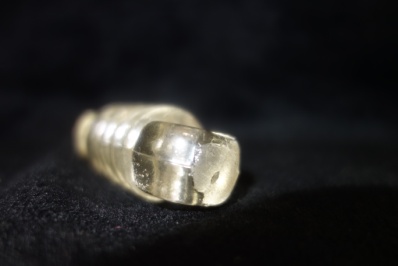
But all Alleys do look just like the one in these photographs.They have a mold seam top to bottom. And the last time we spoke with Larry he told us just to look for a ground end on either end of the insulator. See the top of the insulator in the bottom photograph? Well, that is the ground end. Most alley clear insulators are slightly yellow and not completely clear.
We have no idea if our insulator was used or not. You might want to collect a few different insulators from known makers just a visual comparison to the Alley.
While we were talking to Larry Alley on the telephone, we both looked at page 102 in his book L.E. Alley “Father of West Virginia Swirls” …. We have never found an insulator with the mold marks and the ground end in any color except clear so we asked Larry if Alley really did make the cobalt and green. He said yes they did.
Then we took a good long look at the other insulator photograph on page 102. He said that he had never really known exactly what was in the cases but that he remembered that Ron Sheppard, a national treasure and unparalleled promoter of marble collecting, dug them up.[13]
The photograph caption reads “over 130 reject insulators dug in Pennsboro. So much dirt is caked on that the color of the glass is barely visible. Largest reason for the rejection is: Glass did not fill the mold, or the holes are filled with glass. Many have been chipped or broken over the years. Dug on 30 April 2013.”
Honestly, we think that we would prefer a gaggle of geese than a gross of insulators. No idea what Ron did with them. We just wonder would you clean them or leave, at least some of them, in dug condition? We have an Akro Agate tea cup that was dug and we left it as it came out of the ground; also many Heaton marbles.
Looking Back & Looking Forward
Well, this is an Alley menagerie story without the nit-picky details of identifying Alley animals. And some people love nit-picky. So, we have given you the best place to find the tiny details if you want to. But we do hope you have been encouraged by this story to add a creature or two to your own menagerie or to start a new menagerie of your own.
Remember, unless the creature is very special it shouldn’t cost much. The squirrel with the big nut, for example, is special. Identification isn’t really hard once you study Larry’s page 70 addendum and look at a dozen or so animals. And we recommend that even if you are unsure in the shop then just buy a few L.E. Smiths and McBrides “by mistake”. These are nice, too. And remember, all of these little glass animals are historical artifacts now. From a past long gone. Unless new old stock, each animal was treasured by someone and each has its own unique story.
And insulators? Well, we have looked without success for twenty years for a colored Alley strain. We only have one single insulator and it is clear (yellowish). Do you have a Ham license? Antenna in the back yard? We can’t say how many HAM operators are left, but it is an old hobby dating, in some form, to the last quarter of the 19th century. The American Radio Relay League was founded in 1914. We concede that insulators may not be the most exciting part of your collection, but it can still be fun to look for them. And you do meet a lot of very different people at the “gypsy” tables, where the strains are most likely to be found, and it can be fun talking to the vendors.
So look back and then collect a bit of history and then look forward to adding it to your collection. It can prove to be a whole new kind of fun to have with your Alley Agate marble collection!
References
- Our friend Tom Felt wrote the book L.E. Smith Company: The First One Hundred Years. It was originally published in 2007 and it was out of print since 2012. In 2020 it was published with a ring binding by Glass Flakes Press, imprint of The Museum of American Glass in West Virginia (https://magwv.org/). You can buy it through the Museum store. Felt’s book has animal images and descriptions by Catalog number on pages 315 – 319. You can buy Felt’s book through the online museum shop. ↑
- Alley, L.E. L.E. Alley “Father of West Virginia Swirls & Maker of Fine Tableware 3 Generations My Grandfater—My Father—Myself. Marlborough, MA: Alley Cat Images, 2013. We spoke with Larry while writing this story and he told us that the best way to buy his books now is through eBay. You might want to get to eBay through https://www.facebook.com/Alley.Agate/ (7/31/2024). This website has a wealth of information and color photographs as well as this notation from Larry: “Webs.com, which hosted my old sales site, has closed. The books are now listed on eBay. L. E. Alley (Company History): www.ebay.com/itm/332884761912 Photo Book: www.ebay.com/itm/335035516068 Photo Book & Memory card: www.ebay.com/itm/335011091473 .” What Larry calls the “Company History” book is the original 2013 book. He now has for sale two “Marble Photo Books.” He writes on Alley Agate Collector website that the two new books feature “… excellent glossy photos of over 9000 marbles in cases. Includes 1933 Salesman Sample Case from Pennsboro. Also, larger pictures of 427 marbles with 4 to 6 views of each are included (38 pages). Includes 81 pages of Alley marbles which can be traced back to the factory locations, making the identification certain. They came direct from the factories; either dug in Pennsboro, brought home when St. Marys and Pennsboro were operating or are in original packaging. Alley marbles from the collections of Dale Simmons, Ron Shepherd, Frank Sellers, Linda Moore Simmons and Larry Alley are in this book. Included are 5 pages of toy dishes and glass animals that Alley Agate made. Hardcover – 111 pages – Coffee Table Quality (8.5 x 11 in).” We did not speak to Larry about this, but we understand that there is a … memory card of the entire book when you order the book.” We believe that the memory card contains the Photo Book(s). ↑
- We have given you a suggestion where to find information on Alley animals. A launch pad for your comparisons, especially if you already have a few in the stable, is the online 2020 update page which Larry wrote to insert in his 2013 book as an addendum to page 70. This page was designed by Larry Alley to fit into his book. It is published online @ https://www.facebook.com/photo/ 7/31/2024. Larry mentioned this page the last time we spoke with him as his most recent update. ↑
- You can see the two-page addendum @ https://www.facebook.com/photo?fbid=2652133801677126&set=pcb.2652134168343756 8/3/2024 ↑
- You can see a photograph of a shaggy bark tree and read about the six types of hickory nuts @ 6 Types of Hickory Trees in West Virginia – Hickorytreereport.com 8/4/2024 ↑
- You can find a whole list of shows @ https://www.westvirginiamarblecollectorsclub.com/ (8/4/2024). And if you have never been you have to try and give Round Top, Texas a visit: “Twice a year, in the spring and fall the small Texas town of Round Top swells from its population of 90 to a few hundred thousand during the Round Top Antiques Festival. The antiques show is the largest of its kind in the country, stretching over 11 miles on either side of Texas State Highway 237.” We have been once and there are literally tons of antique marbles, old marble games, marble bags, and just about anything marble related that you can think of. https://www.roundtoptexasantiques.com/show-dates 8/4/2024 ↑
- While we keep his name and contact information in our files, we will leave him anonymous in this post. ↑
- You might want to check Lawrence Everett Alley Sr. (1882-1952) – Find a Grave Memorial ↑
- https://www.fgdglass.com/blog/which-is-better-sandblasted-or-acid-etched-glass/ (8/8/2024) Shinnston is in Harrison County and it is only about ten miles from Clarksburg. “Shinnston was settled during the Revolutionary War period by members of the Quaker Shinn family. Levi Shinn’s 1778 log house is now the oldest house in Harrison County. By 1785, Shinn (1748–1807) had established a local gristmill. Asa Shinn laid out town lots in 1815. Shinnston was chartered as a town in 1852 by the Virginia General Assembly. Shinnston grew slowly over most of the 19th century, then boomed late in the century with the exploitation of local coal, oil, and gas.” https://www.wvencyclopedia.org/articles/395 (8/8/2024). Clarksburg, Salem, & Shinnston are all in close proximity in Harrison County. ↑
- This photograph of a Four-Part Cast-Iron Heart glass Mold is courtesy of Tony Patti, www.glassblower.info . Tony also has a web page about the company Marble King in West Virginia with some unique photographs @ http://www.glassblower.info/one.php?id=marblekinginc (8/9/2024). Tony’s site is new to us. ↑
- Six, Dean, Susie Metzler, and Michael Johnson. American Machine-Made Marbles. Atglen, PA: Schiffer Publishing Ltd., 2006, page 36. ↑
- @ https://www.nia.org/general/g_radio.htm 8/11/2024 ↑
- Ron died April 13, 2023. There are a number of videos of him online that you might want to check. And to see a very nice photograph check The Marble Connection @ https://marbleconnection.com/topic/34582-sad-news-ron-shepherd/ 8/11/2024 ↑

